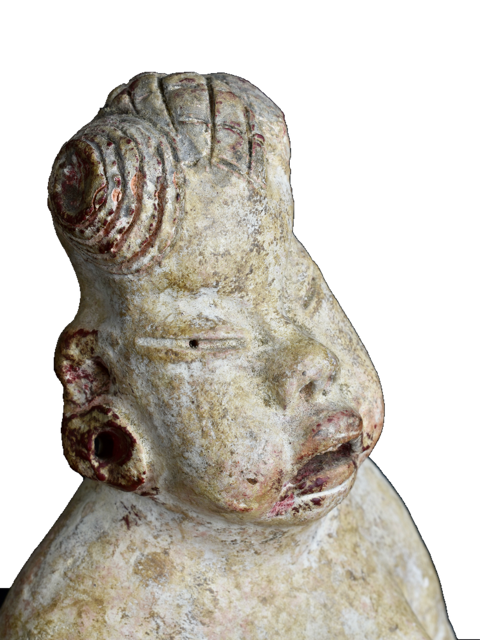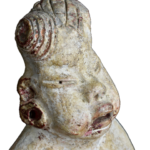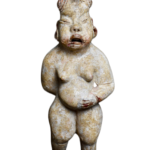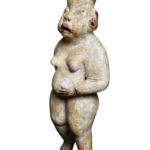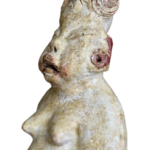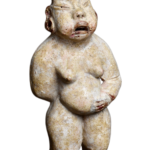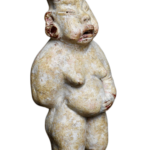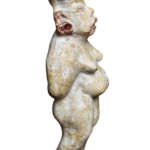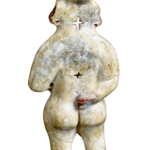Olmec Baby Figure c. 1200 – 400 BC
Intricate Details and Artistic Narrative of this
Standing Olmec Baby-Face Figure
This gorgeous white-cream Olmec baby figure is hollow. It belongs to a subset of artifacts and represents the Olmec class of human “baby-face” figures. These delicate pudgy figurines are notable for their intricate craftsmanship and are believed to have had ritual or symbolic significance in Olmec culture. It showcases traits akin to well-nourished individuals. The Olmec civilization might have shown a keen interest in nurturing children and the mythical ties between the growth of infants and the cycles of agriculture. These sculptures meticulously capture realistic skin folds and subcutaneous fat, symbolizing abundance and ample resources. This representation could be a portrait of a maternal elite or can be interpretative of a crop fertility figure. Her left hand embraces her stomach while the right hand extends to her lower back. The face exhibits crisp features like slit-stylized eyes, a broad upturned nose, a downturned open mouth exposing her jagged upper teeth, squared ears with large open earplugs, and an intricate hairstyle and turbine on her elongated head. Notably, the center part of the figure’s back, head, and bottoms of her feet feature iconographic cross-vent elements, possibly alluding to the symbol of divinity.
Hollowed body. Made from a pinkish-colored clay. Covered in white-cream slip and red pigment. Possibly powdered cinnabar and red ochre, and likely employed in anointing the tomb where this figure found its place.
She stands independently, but a custom stand will be fabricated to provide a safer platform and extra support.
It is rare to find an Olmec standing babyface figure.
Ca. 1200 – 400 BC
Gulf Coast, Mexico
Measures: 8.5” in height.
Condition: Fully intact – Choice
Provenance: ex-old private Coral Gables Collection, Acquired in the 1960s-1970s by inheritance.
Price $14,500 – Domestic Delivery Included
You may also preview this Olmec Baby Face Figure via YouTube by clicking here: Olmec Baby Face Figure.
Click here to see our next item.
Are you seeking a particular piece? Please feel free to let us know.
Regional Division of Pre-Columbian Americas’ Major Archaeological Cultural Phases
